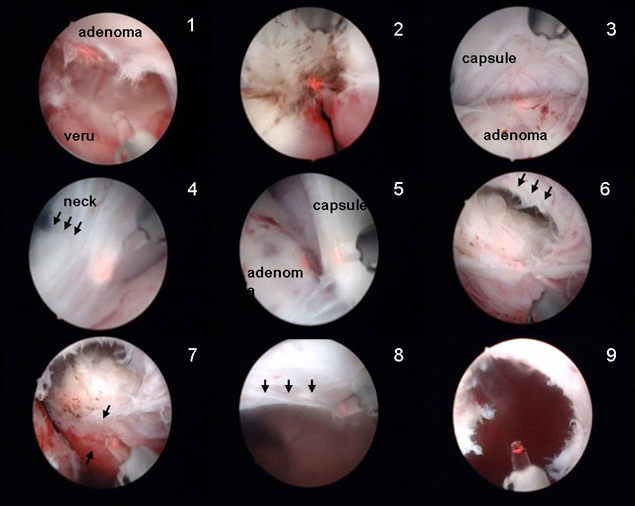
Holmium-Laser Enucleation of the Prostate: HoLEP
Many cases of enlarged prostate tends to progress with age. For severe cases where medication does not work or the disease causes urodialysis (a condition where one cannot urinate), operative therapy is recommended.
*The category of the severity is comprehensively sorted by the size of the prostate, subjective symptoms, urinary flow rate, and amount of residual urine. The size of the prostate is an especially important indicator, and caution is needed for over 50grams.
In our department, we offer Holmium-Laser Enucleation of the Prostate (HoLEP) and endoscopic surgeries for benign prostatic hypertrophy treatment. HoLEP has the following advantages compared to the prior standard transurethral resection of the prostate (TURP), and since its implementation in 2006, it has been used for most benign prostatic hypertrophy treatment.
Some of the main advantages are
- Size Independent:
It is not a resection, but a hollowing out, so the surgery is possible for a prostate of any size. - Less Bleeding:
There is small amount of bleeding, and risk of blood transfusion. - No TUR Syndrome:
The irrigation used in the surgery is normal saline, so there is no risk of hyponatremia, which is a problem for TURP.
After the surgery, a catheter will be indwelled for about two days. One day after decannalization the patient will be discharged, and the average length of stay is 4 days 5 nights (length may vary depending on the condition.)
You will be asked to visit 2 weeks after the operation, when we will give you the pathological diagnosis and ask about postoperative course. After this, we will follow-up every 3 months at outpatient visits.
Please ask our outpatient surgeon about details of the surgery.
The pictures below show the operation outline of HoLEP.
The characteristic of this surgery is to hollow out the prostatic tumor from the back (antegrade dissection.)

(Endo F. Urology 2010)
